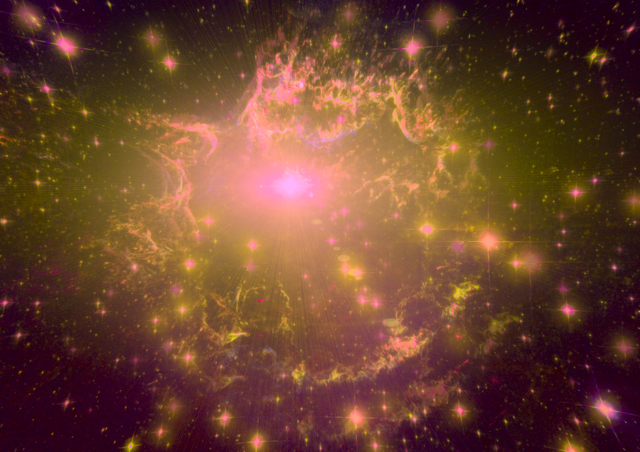Chap. 6 Formation of the asteroid belt.
6.1 How the asteroid belt formed?
If a planet approaches the Sun too closely, it cannot grow larger due to the Sun's gravity.
It is not possible to grow greatly because the density of the interstellar material is low even if it is too far away from the Sun.
The frost line has been existed near the center of the asteroid belt after the Sun began a nuclear fusion.
Inside the ice boundary, water (H2O) exists as water vapor and ice on the outside. The area near the ice boundary is the best place where the planet can grow.
That is, the location of the asteroid belt is where the planet can grow rappidly.
There is an ice boundary near the place of the asteroid Ceres (2.767au)
in the center of the asteroid belt. But the area between Mars (1.524au)
and Jupiter (5.204au) is a blank region of the planet. 1au is the distance
between the Sun and the Earth, its value is 1.5x1011 m. There are many meteorites and many asteroids in the asteroid belt.
Its total of the mass is estimated at 2.1x1021 kg, which is equivalent to 1/35 of the Earth's moon.
Where did the interstellar material splattered in this area? There is an explanation that the planet was not able to grow in the asteroid belt,
because of Jupiter's gravitation. But the asteroid belt is outside Jupiter's gravitational sphere.
There are 79 of satellites including the large Galileo satellites in the gravitational sphere of the Jupiter.
If Jupiter's gravitational pull is cancelled by that from the Sun, the planet must have grown because interstellar matter stays in this area.
Meteorites scattered throughout the asteroid belt cannot be made from
cosmic dust only by gravity in a cold space environment. Meteorites cannot
be made unless they are in a high-pressure, high-temperature environment,
such as inside a celestial body. Many of the meteorites are solids released
by the core of the Sun's inner fusion explosion. It can be thought that
a part of them were included debris of the explosion due to a nuclear fusion
that caused the heavy bombing at 3.8 billion years ago. It led to the idea
that planet (X) in the central Ceres location of the asteroid belt became
a planet larger than Jupiter, and a single explosion due to a deuterium
fusion took place. That is, the debris of the core became meteorites and
asteroids.
6.2 The planet that failed to become the second Sun

The speed of growth on a planet (X) is higher than Jupiter by the density of cosmic dusts the ratio of deuterium for hydrogen
is higher in the position close to the center of gravity by material differentiation in the planet (X).
There is a possibility that the deuterium causes a nuclear reaction under the high pressure with high temperature.
[CG was provided by Pixta] There is the report that the planet with the mass of 13 times of Jupiter
can temporarily perform deuterium nuclear fusion [1].[CG was provided by Pixta]
When the nuclear fusion of deuterium occurs at the planet (A), the core
explodes owing to the reaction, and debris become meteorites and asteroids.
The fine powders scattered by the explosion due to nuclear fusion in planet
(A) is swept away by the solar wind, and it does not return to the original
planet (A). The planet (A) loses most of its mass. Those materials were
captured by the Sun and planets such as Jupiter. The explosion by the deuterium
nuclear fusion in the planet (A) ends only once. Some of the debris emitted
by the explosion collided were remained in the asteroid belt. Some of the
shards of the exploded Planet (A) fell on the other planets. This phenomenon
may be corresponded to the late meteorite heavy bombing that the planets
received 3.8 billion years ago.
index -6.1-